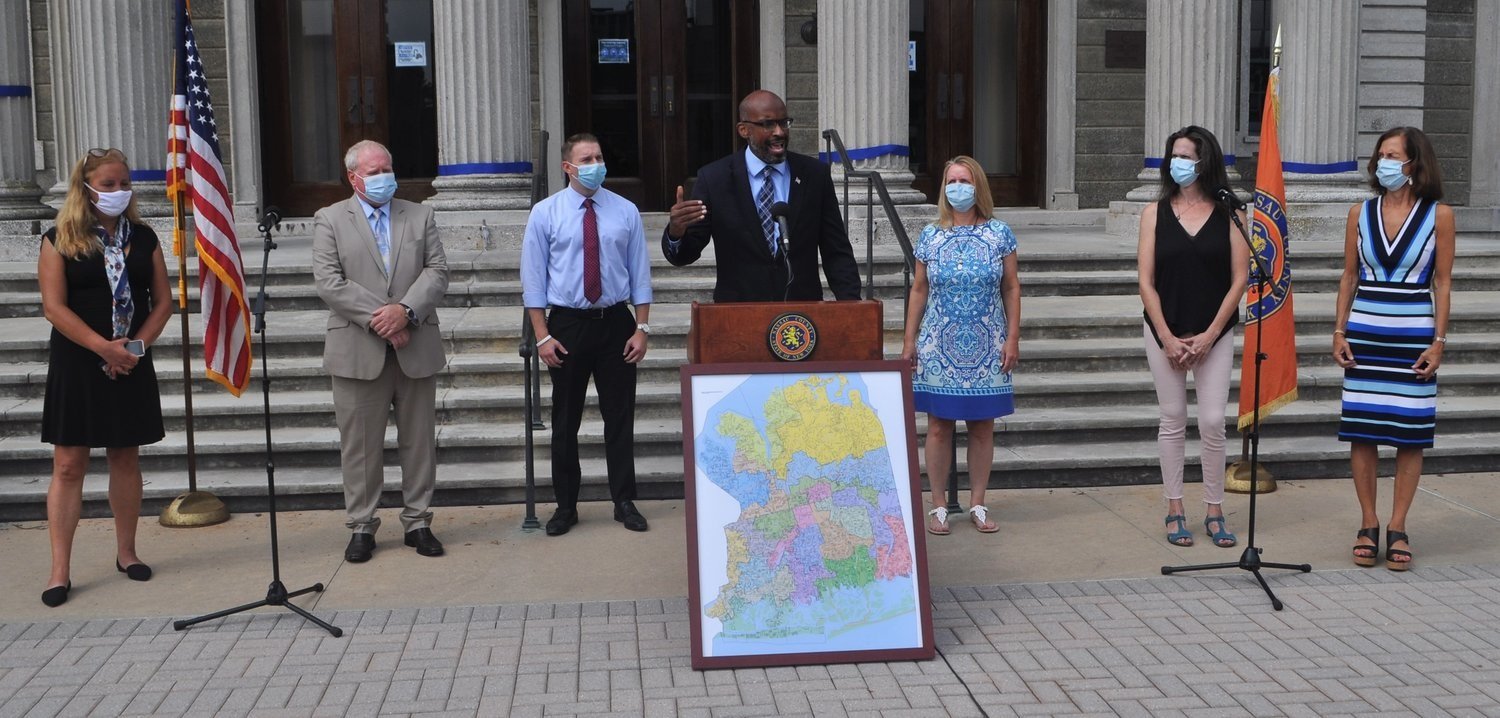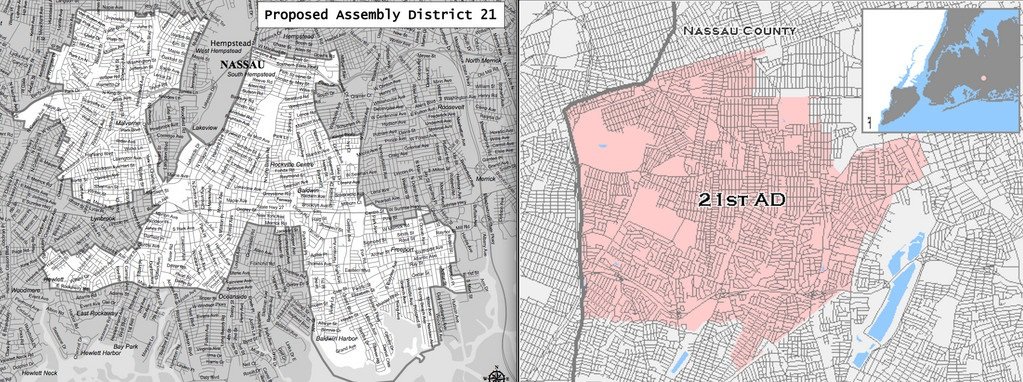Elmont leaders call for better redistricting
Residents hope process considers 'community character'
With redistricting on the horizon after the release of 2020 census data, local leaders shared two of their concerns: representation and resources.
Redistricting, the redrawing of federal, state and local electoral districts that encompass multiple communities and voters, is conducted every 10 years. As outlined by the U.S. Constitution, a nationwide census is conducted once each decade, and redistricting is based on census data.
“People feel disenfranchised by congressional lines,” said State Assemblywoman Michaelle Solages, a Democrat from Elmont, explaining one major issue that Elmont residents have with redistricting: feeling represented in Congress.
Part of the 5th Congressional District, Elmont is represented in the House of Representatives by Gregory Meeks, a Democrat. During the last redistricting process in 2011-12, the 5th district was redrawn. Under the new map, Elmont residents are represented by Meeks, a household name in Queens, but someone less well known in the Nassau County communities that he represents.
A number of Elmont voters said they would prefer to be represented in Congress by someone based in Nassau, and since Meeks’s office is located in Queens, many Elmont residents believe the congressman is unfamiliar with suburban needs of Long Islanders, Solages said.
This is not just a concern at the national level, but on the state and local levels as well, said Mimi Pierre-Johnson, leader of the Elmont Cultural Center and longtime community activist.
“We will be, if the map stays the same, with all three elected officials as Queens elected officials,” Pierre-Johnson said, referring to Meeks, State Sen. Leroy Comrie and State Assemblyman Clyde Vanel, whose constituencies also stretch across Queens into Nassau.
Pierre-Johnson said this hampers another area of concern for Elmont voters: policy. “Absolutely nothing policy-wise they’re saying is related to Nassau County,” she said.
Pierre-Johnson applauded policies secured by Meeks and other elected officials for Queens residents, such as universal pre-K. On the other hand, Pierre-Johnson noted that Long Island residents are subjected to higher taxes compared with Queens residents.
“Voters should be able to elect representatives who reflect their values,” Solages said.
“I’m thinking about resources,” Pierre-Johnson emphasized. “What type of resources are my taxes providing? They’re failing me in that way.”
“Elmont was carved up,” said Solages, who represents all of Elmont in the State Assembly district that was created in 2012. “We should be drawing lines that don’t disenfranchise communities,” she added.
In the State Senate, Elmont was split into Districts 7 and 9, represented by two Democrats, Anna Kaplan and Todd Kaminsky. The “voices of districts” were effectively split, weakening community organization, Pierre-Johnson said.
Solages emphasized that redistricting should “keep communities whole” and represent the “character of communities.”
Because of the large Haitian constituency in Elmont, Pierre-Johnson said many residents believe Meeks and other Queens-based elected officials need to do more to establish a relationship with the Caribbean community. This, she said, would benefit residents.
The 2011 redistricting process, which Solages called “unemotional,” did not significantly “consider socioeconomic concerns as well as realities at the town and county levels,” she said, adding, “Communities should be protected and empowered in this process.”
Currently, redistricting in Nassau is overseen by an 11-member board composed of five Democrats and five Republicans. County Executive Laura Curran selects the nonvoting chairperson who oversees the board.
In November, voters across Nassau will be able choose a new method of redistricting growing more popular and prevalent nationwide: an independent commission. This method calls for an apolitical commission to redraw electoral boundaries without the influence of political parties and politicians.
Legislation in favor of creating an independent commission has passed the New York State Legislature twice. Per state law, because the legislation has passed twice in both houses of the legislature, a referendum to create the independent commission will be posed to voters on Election Day.
Solages, who voted for the legislation to create an independent commission, emphasized that voters need to play a role in redistricting. “It’s important that we’re hearing input from communities,” Solages said.
“We should have nice, clean districts that people don’t need a ruler or rubric for to see how the lines have been drawn,” Solages said. “We want to make sure that the process is that the people are electing their officials, not that elected officials are choosing their voters.”

 44.0°,
Mostly Cloudy
44.0°,
Mostly Cloudy 








